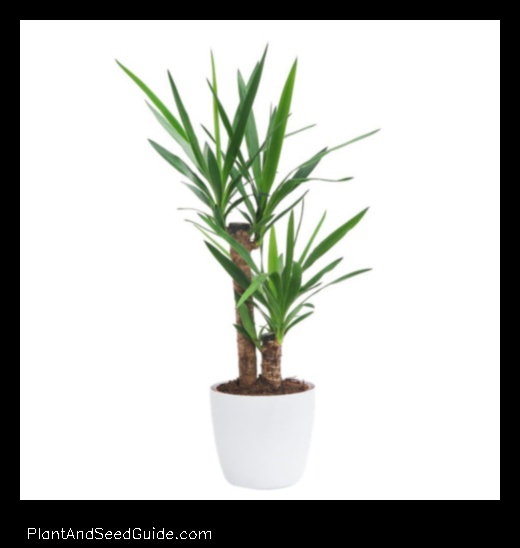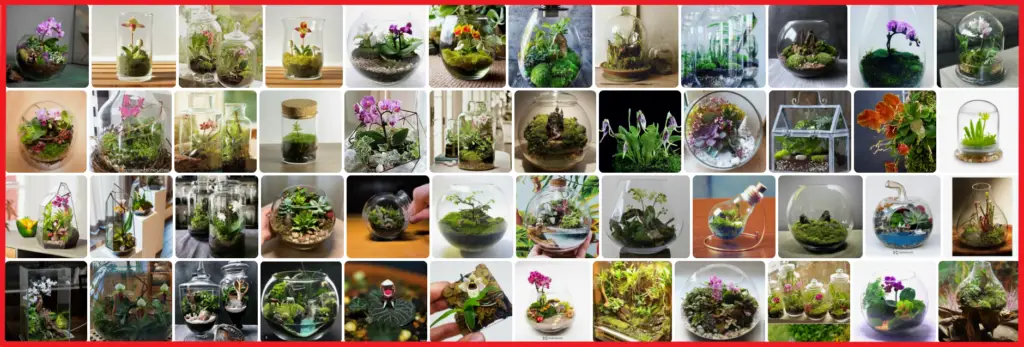

How to Repot a Yucca Plant
| Topic |
Answer |
| Yucca Plant |
A yucca plant is a type of succulent plant that is native to the Americas. It is characterized by its long, spiky leaves and its drought-tolerant nature. |
| Repot Yucca |
Repoting a yucca plant is necessary when the plant has outgrown its current pot. The best time to repot a yucca plant is in the spring or summer. |
| Yucca Care |
Yucca plants are relatively easy to care for. They require bright light, well-draining soil, and infrequent watering. |
| Yucca Repotting |
The process of repotting a yucca plant is relatively simple.First, carefully remove the plant from its current pot..
Then, choose a new pot that is slightly larger than the old pot. Fill the new pot with fresh potting soil and carefully place the plant in the center. Water the plant thoroughly and fertilize it according to the package directions. |
| Yucca Transplant |
Transplanting a yucca plant is similar to repotting a yucca plant. The main difference is that when transplanting a yucca plant, you are moving the plant to a new location. |

What is a Yucca Plant?
Yucca plants are a type of succulent that is native to the Americas. They are characterized by their long, spiky leaves and their drought-tolerant nature. Yucca plants can grow to be quite large, with some reaching heights of up to 30 feet. They are popular landscape plants, and they can also be grown indoors.
When to Repot a Yucca Plant
The best time to repot a yucca plant is in the spring or early summer, when the plant is actively growing. This will give the plant time to adjust to its new pot and soil before the weather gets too hot.
If you need to repot a yucca plant outside of the spring or early summer, it is important to do so as carefully as possible to minimize transplant shock.
Loading... Seconds Left for
Miniature Orchid Terrarium Gallery!

How to Repot a Yucca Plant
Repoting a yucca plant is a relatively simple process, but there are a few things you need to keep in mind in order to do it correctly.
First, you need to choose the right pot for your yucca plant. The pot should be about 2 inches wider than the root ball of the plant. It should also have drainage holes to prevent the roots from sitting in water.
Next, you need to prepare the soil. Yucca plants prefer a well-draining soil that is rich in organic matter. You can use a commercial potting mix or make your own by mixing equal parts of potting soil, sand, and perlite.
ear:both; margin-top:0em; margin-bottom:1em;">
See also
Insider Tips for Growing Lemon Trees from Seedlings
Once you have the pot and soil ready, you can begin repotting the yucca plant. Gently remove the plant from its old pot and loosen the roots. Place the plant in the new pot and fill in around the roots with soil. Firmly pack the soil around the roots and water the plant thoroughly.
After repotting, place the plant in a warm, sunny location and water it regularly. The plant should start to grow new roots and leaves within a few weeks.
How to Repot a Yucca Plant
Yucca plants are relatively easy to care for, but they do need to be repotted occasionally. Repotting helps to provide the plant with fresh soil and nutrients, and it also gives it more room to grow.
The best ti
me to repot a yucca plant is in the spring or early summer, when the plant is actively growing.
To repot a yucca plant, you will need the following materials:
- A new pot that is about 2 inches larger than the current pot
- Potting soil that is well-draining
- A trowel or other digging tool
- A watering can
To re
pot the plant, follow these steps:
- Gently remove the yucca plant from its current pot.
- Loosen the roots of the plant by gently teasing them apart.
- Place the plant in the new pot.
- Fill in the pot with potting soil, leaving about an inch of space at the top.
- Water the plant thoroughly.
After
repotting, you should place the plant in a warm, sunny location and water it regularly.
Yucca plants are generally very hardy and should not experience any problems after being repotted.
However, if you notice that the plant is wilting or the leaves are turning yellow, you may need to adjust the watering schedule or provide the plant with more light..
A yucca plant is a type of succulent plant that is native to North America. It is a member of the Asparagaceae family and is closely related to the agave plant. Yucca plants are characterized by their long, spiky leaves and their tall, upright growth habit. They can grow to be quite large, with some varieties reaching heights of over 20 feet. Yucca plants are drought-tolerant and can thrive in hot, dry climates. They are also very hardy and can withstand a wide range of conditions.
ear:both; margin-top:0em; margin-bottom:1em;">See also
Mini Cherry Blossom Trees | A Beautiful Addition to Any Home
Caring for a Repotted Yucca Plant
After repotting your yucca plant, it is important to care for it properly to help it thrive in its new home. Here are a few tips:
- Water your yucca plant regularly, but do not overwater it. Allow the soil to dry out slightly between waterings.
- Fertilize your yucca plant once a month with a balanced fertilizer.
- Place your yucca plant in a bright location, but avoid direct sunlight.
- Repot your yucca plant every two to three years as it grows.
By following these tips, you can help your yucca plant thrive and enjoy it for many years to come.
Common_Problems_When_Repotting_a_Yucca_Plant">Common Problems When Repotting a Yucca Plant
When repotting a yucca plant, there are a few common problems that you may encounter. These include:
- Root rot
- Dry soil
- Transplant shock
Below, we will discuss each of these problems in more detail and provide tips on how to avoid them.
Root rot is a common problem that can occur when a yucca plant is repotted into a pot that is too large. When the pot is too large, the soil will not dry out as quickly, which can lead to root rot. To avoid this problem, make sure to choose a pot that is only slightly larger than the root ball of the yucca plant.
Dry
soil is another common problem that can occur when a yucca plant is repotted.This can happen if the soil is not watered properly after the plant has been repotted..
To avoid this problem, make sure to water the yucca plant thoroughly after repotting and then water it regularly as needed.
Transplant shock is a condition that can occur when a yucca plant is repotted. This is caused by the stress of being transplanted into a new pot. To avoid this problem, make sure to repot the yucca plant gently and carefully. Also, try to minimize the amount of time that the plant is out of the ground.
FAQ
Q: What is
the best time to repot a yucca plant?
A: The best time to repot a yucca plant is in the spring or early summer, when the plant is actively growing.
Q: What size pot do I need for a yucca plant?
A: The size
of the pot you need for a yucca plant will depend on the size of the plant. A good rule of thumb is to choose a pot that is about 2 inches wider and deeper than the root ball of the plant.
Q: What kind of soil do I need for a yucca plant?
A: Yucca plants prefer a well-draining soil that is rich in organic matter. A good soil mix for yucca plants can be made by combining equal parts of potting soil, perlite, and compost.
Q:
="wpil_keyword_link" href="https://plantandseedguide.com/blog/how-much-is-a-yucca-plant-a-comprehensive-guide/" title="How much" data-wpil-keyword-link="linked">How much water do I need to give a yucca plant?
Yucca plants are drought-tolerant plants, so they do not need a lot of water. Water your yucca plant deeply once a week, or more often if the weather is hot and dry.
Q: How do I fertilize a yucca plant?
Yucca plant
s do not need a lot of fertilizer. Fertilize your yucca plant once a month during the growing season with a balanced fertilizer, such as 10-10-10.
Q: How do I prevent transplant shock in a yucca plant?
To prevent transplant shock in a yucca plant, be sure to:
- Repot the plant at the right time of year.
- Use a pot that is the right size for the plant.
- Use a well-draining soil mix.
- Water the plant deeply after repotting.
Q: What are the common problems with yucca plants?
The most common problems with yucca plants include:
- Overwatering
- Underwatering
- Drought stress
- Potting soil that is too dense
- Too much fertilizer
Q: How do I treat common problems with yucca plants?
To treat co
mmon problems with yucca plants, you can:
- Water the plant less often if it is overwatered.
- Water the plant more often if it is underwatered.
- Move the plant to a location with more shade if it is suffering from drought stress.
- Repot the plant in a pot that is the right size and has a well-draining soil mix.
- Fertilize the plant less often if it is getting too much fertilizer.
Hello, I'm Katie Owen! I am the voice behind "plantandseedguide," inviting you on a journey through the enchanting world of greenery. The magical beauty of nature and the fascinating realm of plants have always captivated me, leading me to this space.
Latest posts by Katie Owen
(see all)


